
UTAR
Institute of Postgraduate Studies and
Research (IPSR) organised a webinar titled "Volunteer Policing in the
United States (US)" on 6 November 2020 via Microsoft Teams. The invited
speaker for the webinar was UTAR International Collaborative Partner (ICP)
Prof Dr Ross Wolf, the professor of Criminal Justice and Interim Provost of
University of Central Florida, USA and also the reserve chief deputy while
moderating the webinar was Dr Cheah Phaik Kin, a lecturer from
Faculty of Arts and Social Science
(FAS).
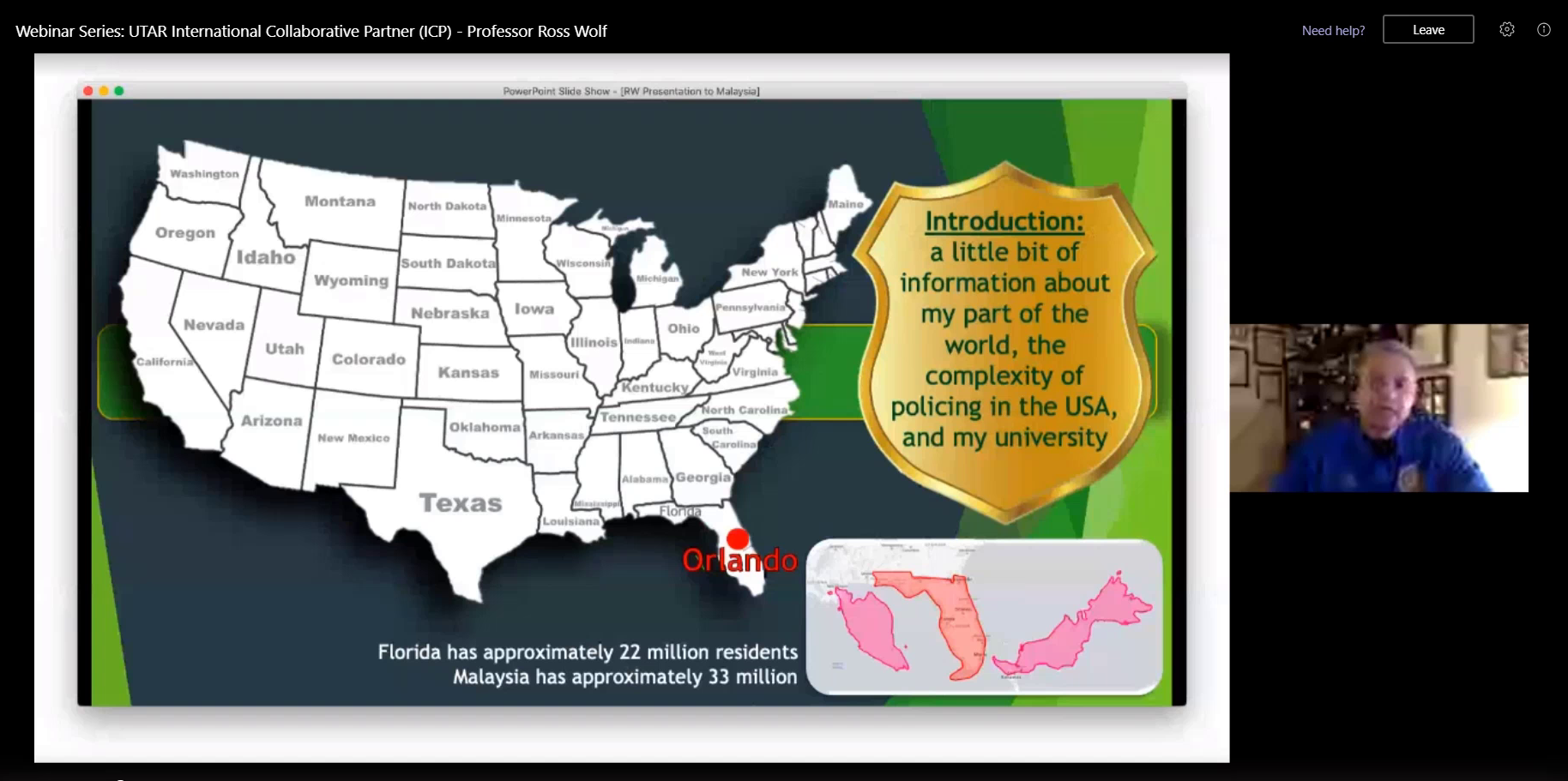
Prof Wolf making a comparison of the
population in Florida and Malaysia
Prof Wolf started his talk by first explaining the
size and population of Florida and comparing it to Malaysia. He said,
“Florida has approximately 22 million residents and Malaysia has
approximately 33 million, so we are a little less in size compared to
Malaysia and also less in population.”
He then continued to explain how to distinguish
Florida’s police department officers and sheriff officers, “Florida police
department officers wear blue uniforms and they usually have a “shield”
shaped badge, while the sheriff and deputy sheriff wear green uniforms while
carrying a five-pointed star badge.”

More than 90% of law enforcement
agencies in the US are made up of local police and sheriff departments
While highlighting the national data or training for
volunteer policing in the USA, Prof Wolf said, “Approximately 35% of all
police departments and 44% of all sheriff‘s offices in the United States
(US) utilise part-time reserve and auxiliary officers. There are estimated
to be 60,000 to 80,000 reserve or auxiliary officers in the states. The
reserve or auxiliary officers with limited average powers need to go through
average 100-350 hours of training while reserves with full police powers an
average of 750-900 hours of standard training.”
He then showed participants the two types of
volunteering police in the USA, namely full police powers and limited police
powers. “Fully-certified volunteer law enforcement officers have full police
powers and they have the same training as full-time police; while the states
delineate volunteer officers without full training as both “auxiliary” or
“reserve officers”, they are volunteers with lower levels of training with
an average of 100-350 hours of training,” he said.

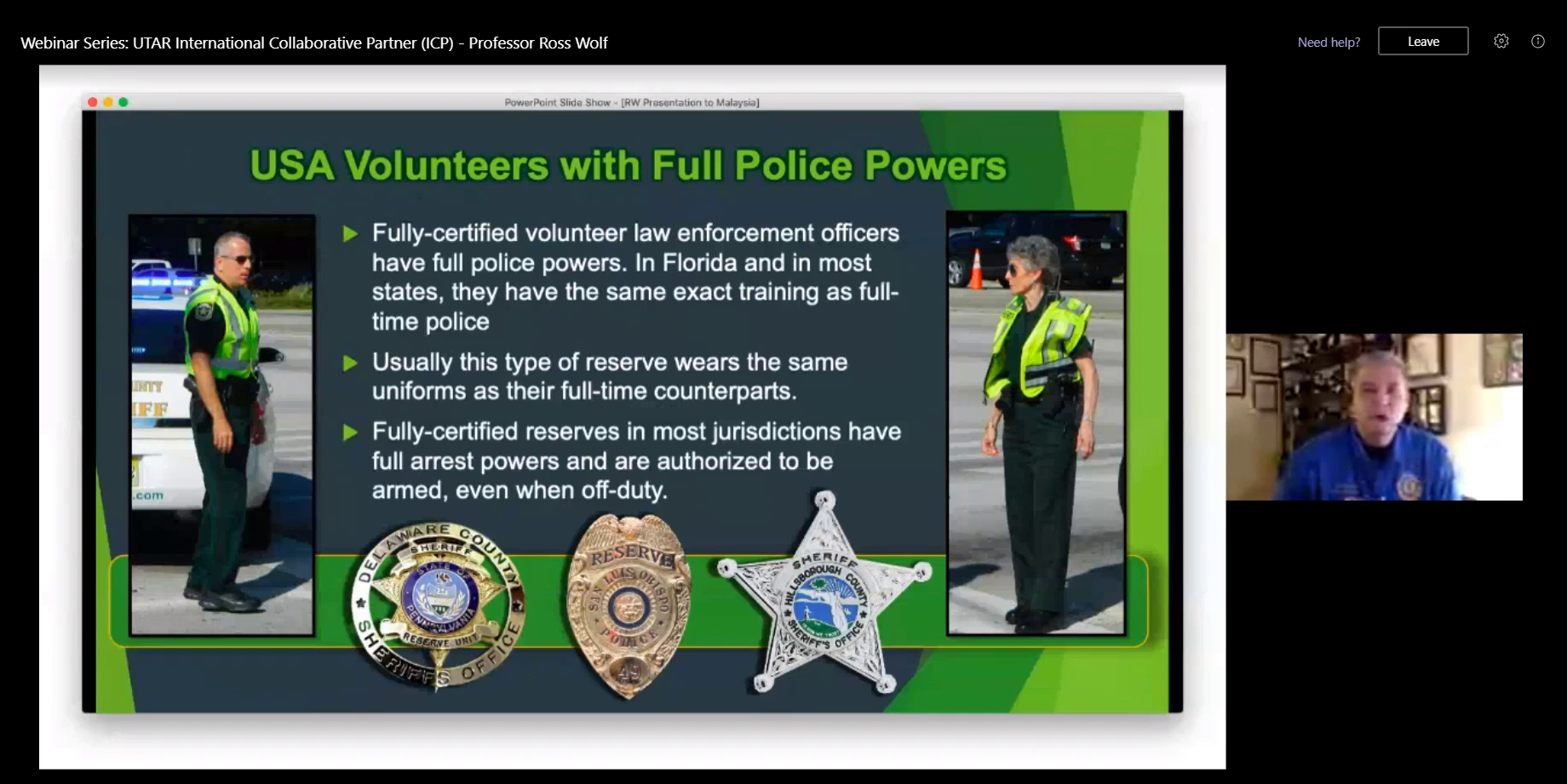
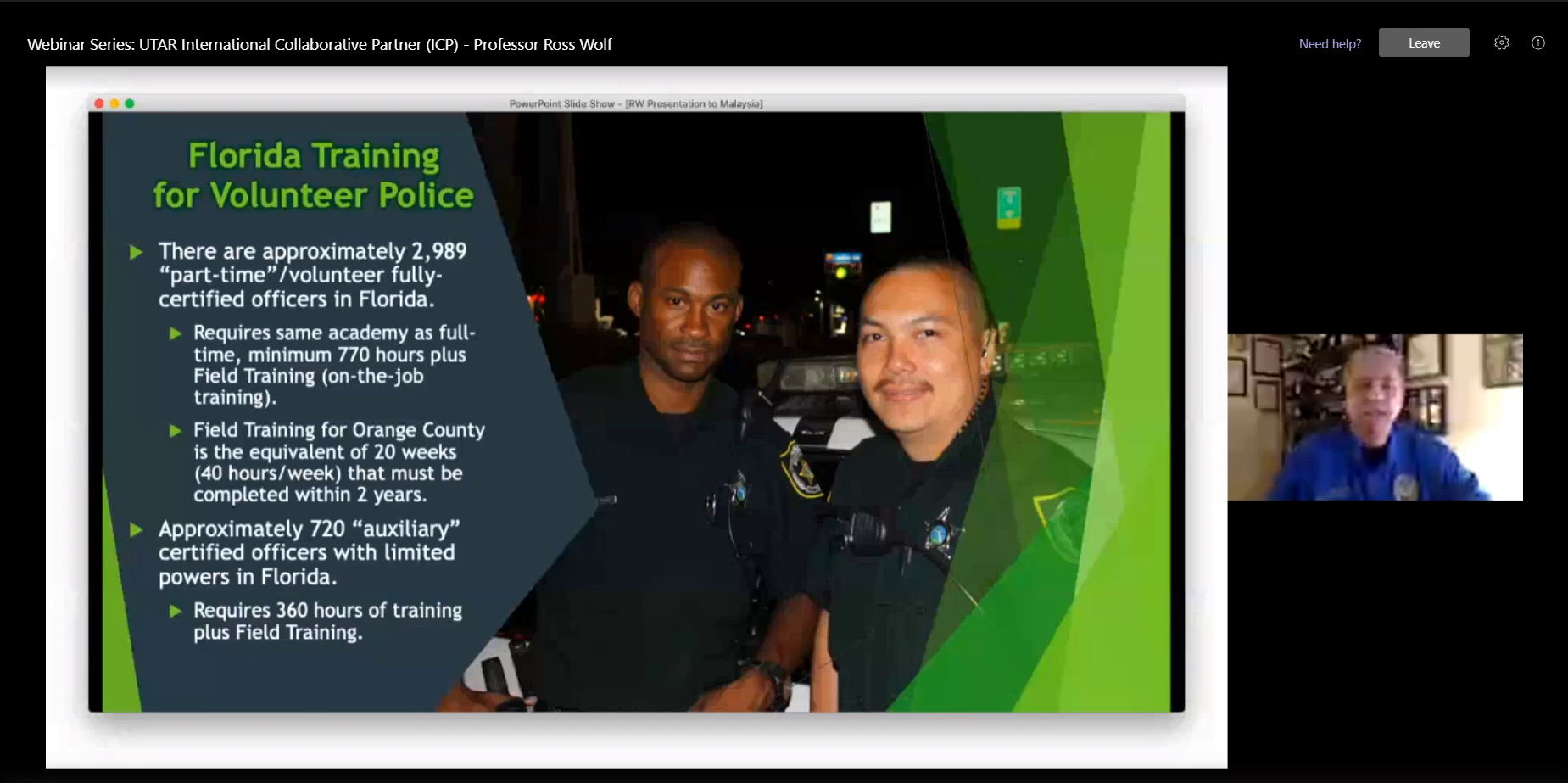
There are approximately 2,989
volunteer fully certified officers and 720 auxiliary certified officers with
limited powers in Florida
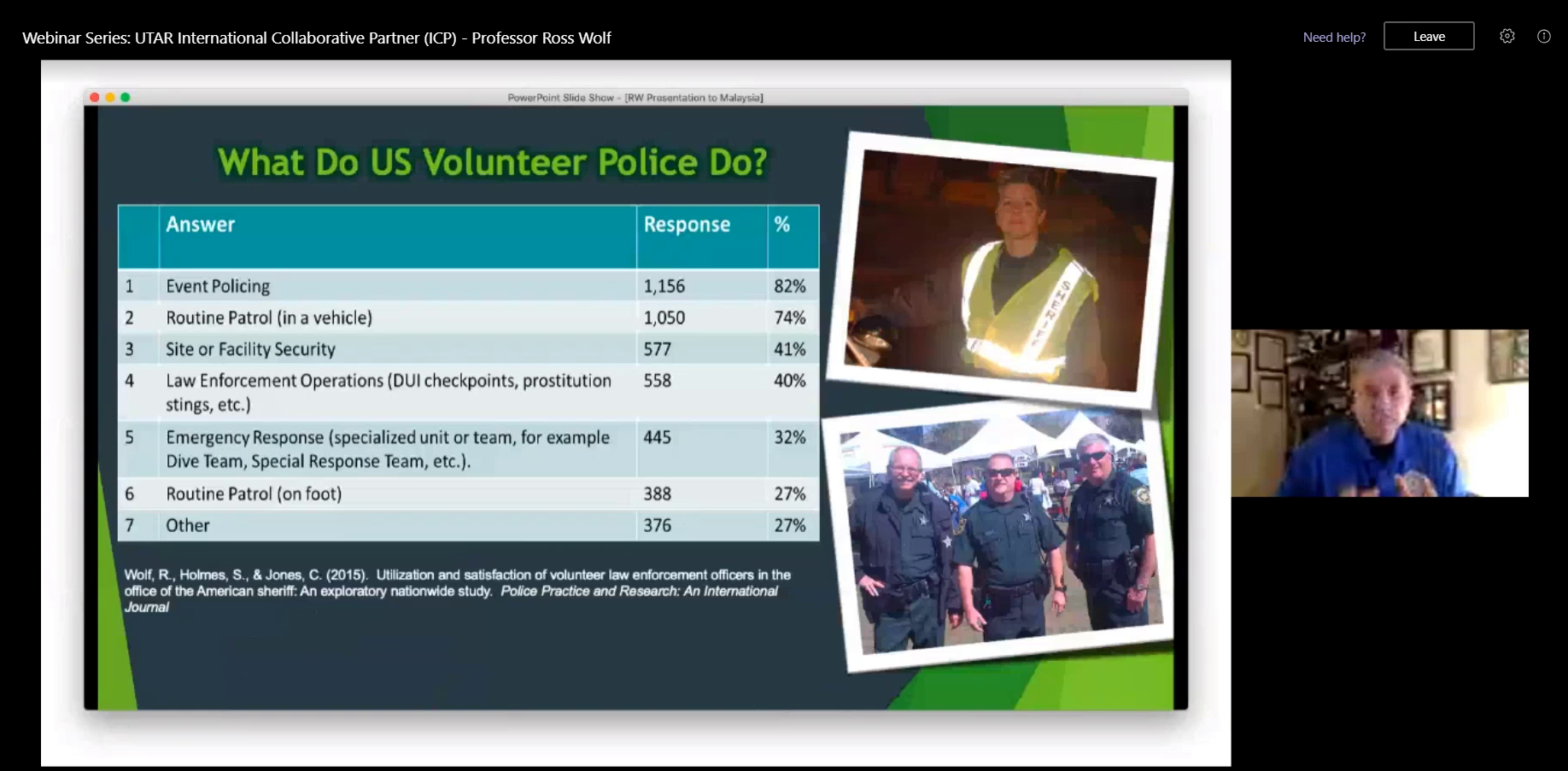
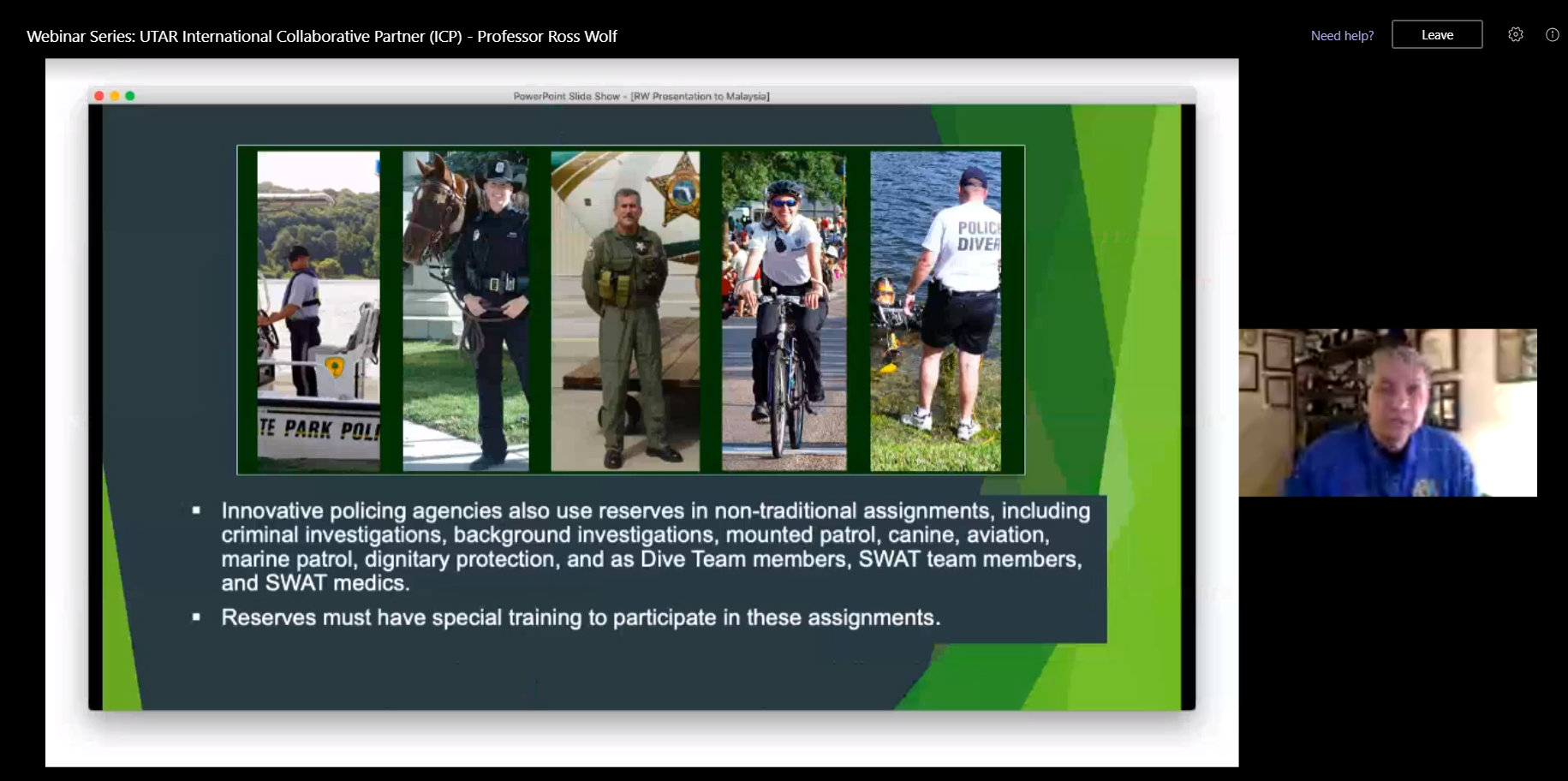
Reserve officers with special training
can be also used in non-patrol assignments including criminal
investigations, background investigations, mounted patrol, aviation and etc
Nearing the end of the one-hour talk, Prof Wolf
explained the three main reasons why people chose to become volunteer
police, “Firstly, the individual wants to learn about policing as their
career and they hope to get their foot in the door of policing or other
criminal justice professions. Secondly, the police officers have other
opportunities or decided to further their education because they wanted to
stay active in policing and serve the community. Lastly, many retired
American police become volunteers to continue to serve their communities and
give back to their society; they also act as a “bridge” between the
community and the police.”
The sharing then saw an active interaction between
the speaker and the participants. The talk was concluded with an extensive
yet insightful Q&A session.
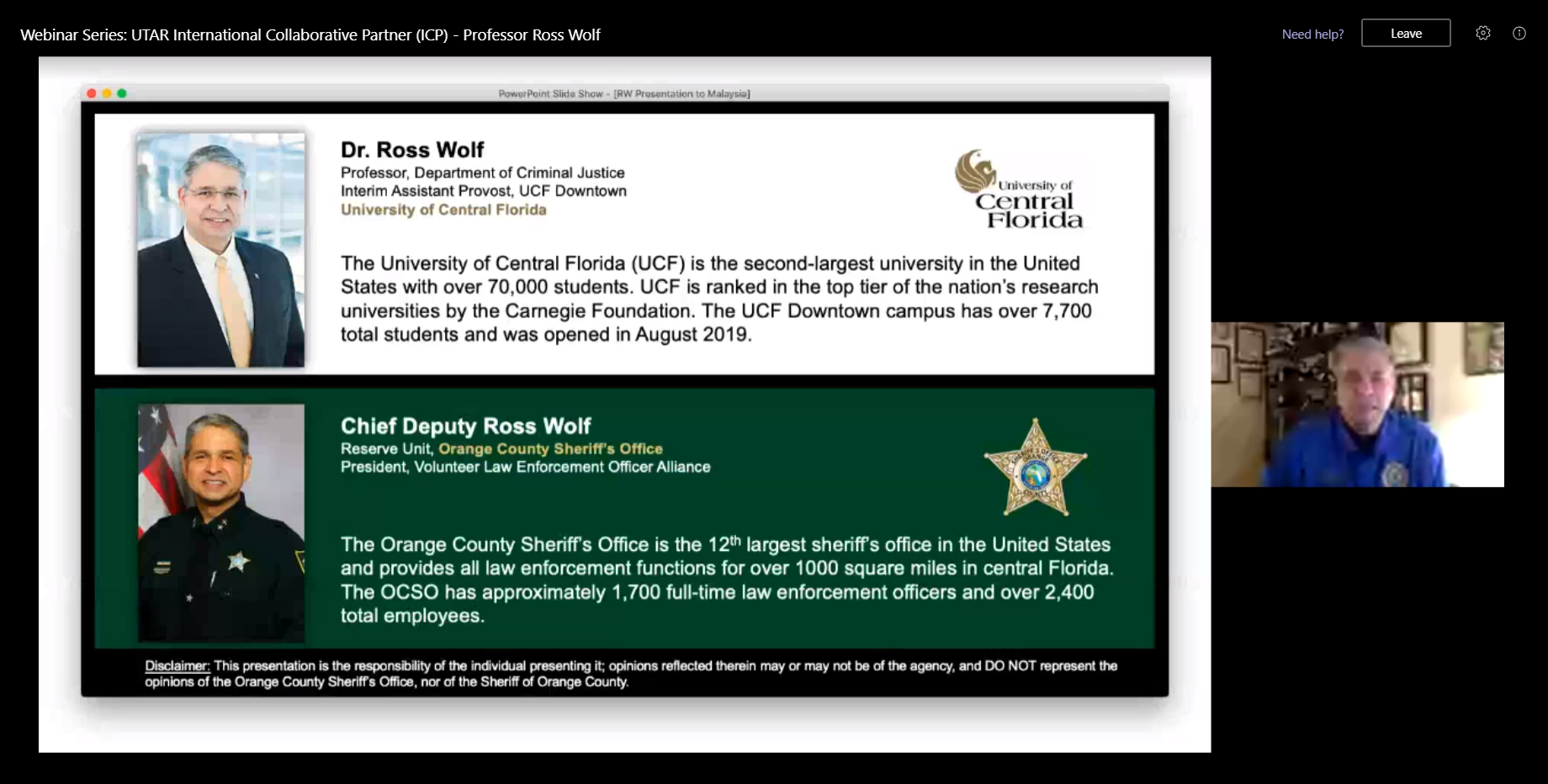
Prof Wolf won the US daily point of
light award and American Police Hall of Fame “J. Edgar Hoover Memorial Gold
Medal for Distinguished Public Service” Award (2018)
![]()
Wholly owned by UTAR Education Foundation Co. No. 578227-M LEGAL STATEMENT TERM OF USAGE PRIVACY NOTICE